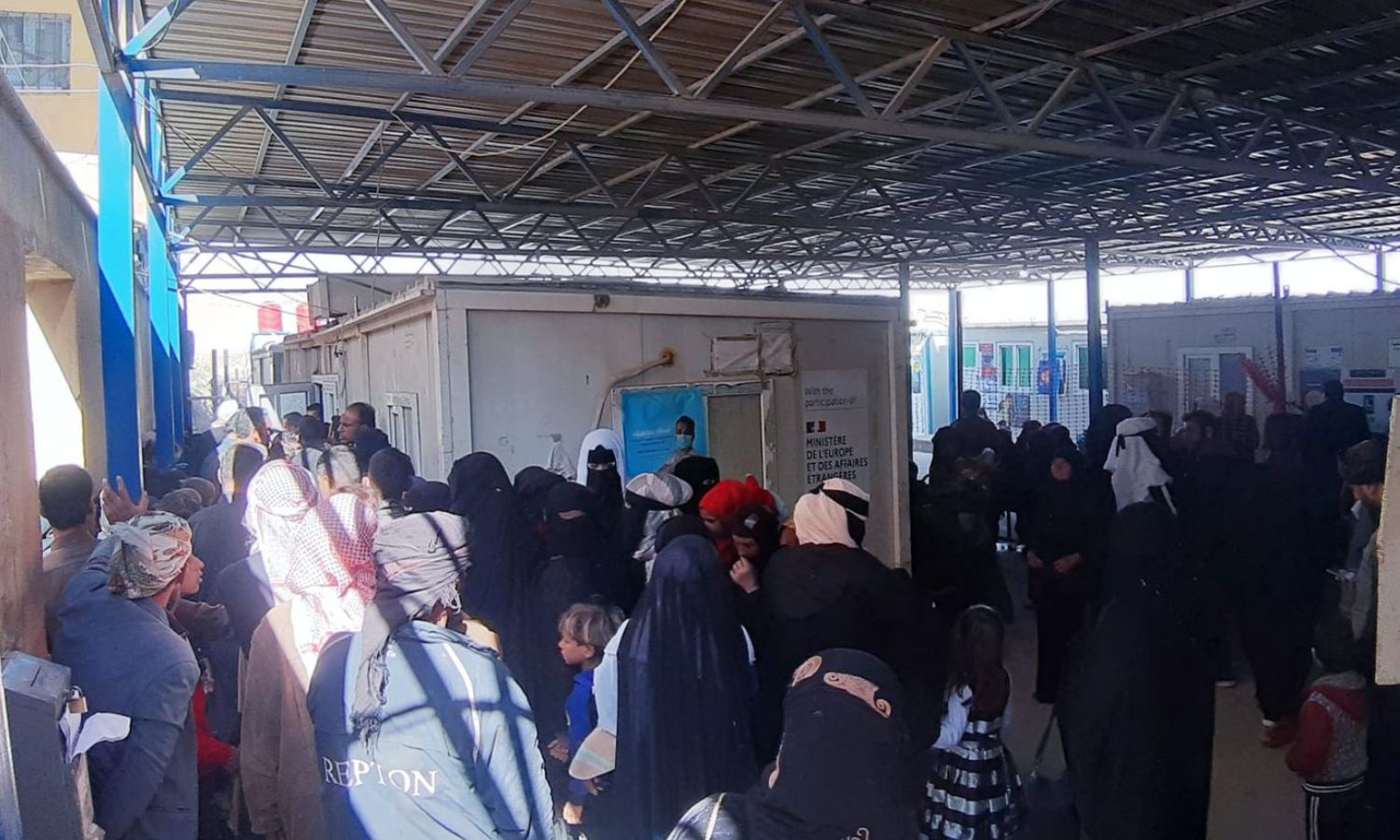



The countryside of Deir Ezzor, where the Autonomous Administration of North and East Syria (AANES) has control, is witnessing a spread of the pneumonia infection, which has caused a state of fear among the inhabitants of the region, amid an almost complete absence of medical services in the area itself.
Cases of infection have appeared in numbers that medical sources described as “many,” resembling the symptoms of severe colds, which made both public and private hospitals in the area crowded with patients.
Safaa al-Taha’s four-month-old daughter contracted pneumonia about 15 days ago, prompting her to transfer her to the al-Hikma private hospital in al-Hasakah after losing hope of treatment in the public hospital in her area due to the lack of available medicines.
What struck al-Taha as odd was not just the absence of anti-inflammatory drugs in al-Basira hospital, east of Deir Ezzor, but also the cost of treating her daughter’s severe inflammation, which amounted to six million Syrian pounds, including the price of the medication that was later requested.
Mohammed al-Saleh, the director of the private al-Kindi hospital in the town of al-Tayana, eastern Deir Ezzor countryside, described the illness as a “severe onslaught,” saying to Enab Baladi that it is similar to severe cold, which follows an ordinary runny nose that infects the lungs and worsens, or after measles infection, and in both cases, the dangers and symptoms of cough and shortness of breath are the same.
He added that these symptoms cannot be predicted and may be mild or severe, leading to death.
He also said that hospitals need to provide oxygen, as children suffer from hypoxia, pointing out that ventilators do not offer any benefit given that the alveoli are damaged in the disease state, and that chest X-rays show very dense infiltrates.
A responsible source in the health committee of AANES in Deir Ezzor, who reserved their name as they are not authorized to speak to the media, said that the disease is viral and has spread “widely,” as the number of infected has exceeded 3,000, noting the presence of several deaths, but they have not exceeded ten cases since the disease started spreading over a month ago.
The source added that medical staff are trying to control the spread of the disease despite the scarcity of resources, but public hospitals have become crowded with patients.
The rural area of Deir Ezzor, under the control of the Autonomous Administration, especially suffers from a shortage of medical supplies. Doctors from the region have previously reported the lack of equipment to detect COVID-19, which swept the world in 2020 and is still prevalent in Syria to this day.
Amid the COVID-19 pandemic that devastated countries around the world between 2020 and 2021, the eastern countryside of Deir Ezzor was almost devoid of active health centers, according to what activists from the region told Enab Baladi back then, and assistance to the infected was limited to volunteer teams or personal efforts by some residents.
At the beginning of the current year, COVID-19 began to spread again in the eastern countryside of Deir Ezzor where AANES has control, according to diagnoses by doctors working in the area, in the midst of an almost complete absence of medical services, which is made worse by the deteriorating security situation.
In mid-2023, residents of the same area were affected by diseases caused by the pollution of the Euphrates River and the lowering of its level in Deir Ezzor, eastern Syria. Bakr al-Sayed Ahbash, a specialist in internal diseases in the town of al-Suwah, west of Deir Ezzor, told Enab Baladi earlier that there were about 50 cases of cholera in the town, some of which became apparent without analysis because of the clear symptoms.
In 2022, the co-chair of AANES’ Health Authority, Joan Mustafa, spoke about tests conducted on the waters of the Euphrates River confirming the presence of Vibrio cholerae, responsible for cholera, which had previously struck residents of the region.
if you think the article contain wrong information or you have additional details Send Correction